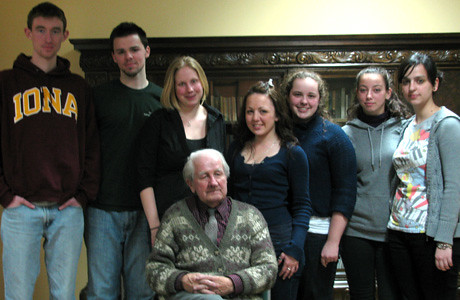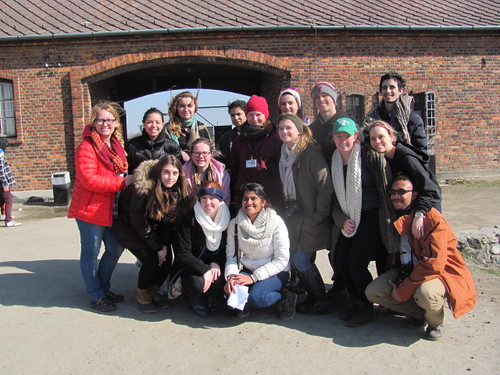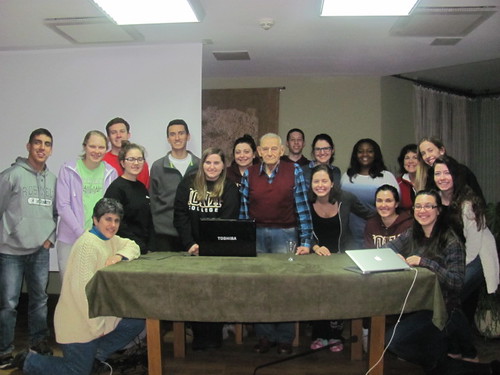This picture was taken on March 20, 2019 in Kraków Poland at 4:53pm. I chose this picture because I liked how the community got together and decided they needed a way to show their respect for the people who suffered in the Holocaust and remembered those who lost their lives and suffered. In this picture it shows a memorial for holocaust victims. This picture symbolizes that we will never forget the events that happened during the Shoah and we use this as a reminder why we should never let this happen again. As we walked up to this memorial we had to pass through an old Jewish graveyard and the old places that used to be forced work places for people who were forced to live in the ghettos and work. The work that had to be done here was building housing and other work places. We placed rocks on the memorial to pay our respects. We learned from Stan who came to talk to our class that In the Jewish culture that places rocks at graves and memorials. The Jewish peoples do this because flowers have a short season in Jerusalem, and rocks are always around. Also, rocks are more permanent then flowers, since flowers will eventually die. As we were walking through this now national park many emotions passed through me. We walked through this park after looking around the old Krakow ghettos. I could imagine and picture these prisoners lives during World War 2. I could picture there long and painful walk every mooring across town around the train tracks to get to work. How they would have to work in any weather condition with limited clothing, no shoes, and barley anything to eat. Then those unfortunate people working from sunrise to sunset every day, just to walk the excruciating walk back to their ghetto. I must have been so horrible to work in these conditions under these circumstances, and I could imagine how it was made worse by the fact that they are working on a Jewish graveyard that was destroyed by the Germans to make this workplace. As our tour guide was taking us around the city of Krakow showing us the towns ghetto and these workplaces, she was telling us personal stories of the people really helped me and the rest on the class. Hearing the personal stories really helped me connect what I was seeing and helped me picture people having to live this way. I think this memorial that we visited is in a perfect spot. It is right were many events of World War 2 took place. This memorial was in three different languages. This allows many different people who speak different languages to be able to read the inscription. This monument is also done so greatly because even if you don’t speak or understand the languages on the monument people can still understand the importance of this and get the full message and effect that was indented from this monument. I am extremely grateful for this experience and for the fact that I got to show my respect for the victims of the Shoah.

























